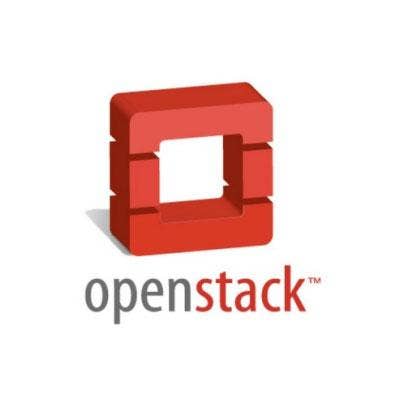10 Cloud Predictions For 2012

The Year Of The Cloud...For Real This Time
Ok, ok. This time it's for real. We've been hearing it for the last four or five years, but 2012 is it. 2012 is the real deal. 2012 is, for lack of a better term, the year of the cloud. It will be the year where the true value of cloud computing is realized. It'll be the year when usage drives innovation and innovation drives usage. And it will be the year that cloud computing gets real.
"In spite of the hype and the attention cloud has received over the past few years, it still remains an emerging technology and one embraced primarily by innovators and early adopters. As the economy warms, I think cloud will enter the mainstream in 2012. I expect cloud will be a serious contender whenever businesses are evaluating their IT options," said Mike Eaton, CEO of cloud services provider CloudWorks.
Here are 10 cloud predictions for 2012.

10. Hybrid Cloud: The Best Of Both Worlds
Throughout 2011, the public cloud versus private cloud debate raged on. Why not take two great things that go great together and go hybrid? In 2012, hybrid clouds will give users the best of both worlds as customers want the security of some resources remaining on-premise while realizing the elasticity of public cloud infrastructure.
"From an infrastructure perspective, companies will realize more use cases for temporary computing resources. They will come to understand that purely private clouds, while similar in operation to public clouds, are still hardware-constrained and therefore impose limitations on elasticity and availability of dynamic compute resources. These realizations will drive customers to hybrid server hosting models, which enable companies to leverage the best of both worlds; completely controlled internal cloud resources with the ability to burst workloads into public cloud providers where appropriate," said Rand Wacker, vice president of product management for cloud security player CloudPassage.

9. Open Source Takes Hold In The Cloud
The Rackspace-led OpenStack cloud infrastructure hit the one-year mark in 2011 and with it more and more open source cloud solutions rose to the surface. And Open source and its relation to cloud computing will continue to grow into 2012.
"More companies will adopt open source applications for use as the foundation blocks of their commercial, Internet-oriented infrastructure," said Andrey Alexeev, co-founder of Nginx, an open source Web server. Alexeev added open source has matured from a "best effort" to "best in class" and in 2012 the adoption of open source in the CDN, hosting, VPS, cloud and enterprise markets will continue.
Rackspace CTO John Engates noted: "Just like the Internet was built on Linux, Apache, MySQL, Perl/PHP (LAMP) the cloud will be built on open source software." Offerings like OpenStack, he said, help avoid vendor lock in and create more flexibility and interoperability in the cloud. "Open source is the future for the cloud!"

8. Multi-Cloud Management Gains Importance
As 2012 rings in, cloud models will continue to blend. With SaaS, PaaS and IaaS joining forces and public, private and hybrid models coming to fore, the cloud becomes a melting pot of various models and the number of companies relying on more than one cloud model will rise in 2012. That heralds in the need for multi-cloud management.
"Enterprises today are no longer asking 'should we move to the cloud?' because they have been swept up in the momentum -- whether they realize it or not. The task for enterprises moving forward is less about selecting individual pieces in the cloud puzzle to work with, and more about putting the whole puzzle together. That means gaining visibility into and enabling the entire lifecycle of cloud-based applications, from development to deployment to operations -- and doing so across multiple cloud providers and resource pools. That's the true promise of cloud computing, and the only way to realize it is through multi-cloud management," said Michael Crandell, CEO of cloud management company RightScale.

7. The Cloud Storage Revolution Will Be Televised
As the amount of data continues to grow and the cost of traditional storage solutions increasing, cloud storage will take deeper roots in 2012 and spark what some have called the "cloud storage revolution."
"Globally, the volume of data is growing at an accelerating, record pace. It is simply not possible for companies or service providers to continue managing and storing data with traditional local or offsite methodologies," said Matthew J. Schiltz, CEO of cloud storage player Symform. "This massive data growth combined with the high cost and reliability issues surrounding traditional offsite storage will force a revolution in the industry, as companies push to get greater ROI from existing infrastructure and take a more strategic view of their data."

6. The Cloud Acquisition Train Keeps Rolling
2011 was a major year for cloud acquisitions, with big dogs like Verizon, HP, Oracle, Dell and myriad others scooping up cloud companies to forge their path to the cloud. And as cloud computing continues to gather steam into 2012, cloud acquisitions will show no sign of slowing.
"We're going to see three types of cloud industry acquisitions next year. There will be takeouts, which will include the big networking players scooping up the promising young companies to kill off the competition; mop-ups, buying dead companies for the people and talent; and innovation buys, to collect technologies to build a business -- likely technologies that appear on the periphery, such as metering, monitoring and chargebacks," said Piston Cloud CEO, Joshua McKenty.

5. Welcome Next-Gen PaaS
A lot of the cloud focus in 2011 was on Infrastructure-as-a-Service, but Platform-as-a-Service (PaaS) will be the new cloud battleground as the market shifts into 2012. And with that shift will come the second generation of PaaS.
"The need for enhanced business agility and cost containment will drive the second-generation of PaaS in 2012. IaaS abstracts IT from physical infrastructure, but still leaves them with the task of creating and administering application deployment architectures. Second generation PaaS provides the next logical layer of abstraction," said SHI Chief Technologist and Managing Partner Henry Fastert. "By automating the creation, monitoring and tuning of application deployment architectures, it frees IT to focus on the tasks that deliver business value to the line of business customers. Second generation PaaS combines the simplicity and cost savings of an on-demand software service, while gaining all the benefits of a proven enterprise solution."

4. The Rise Of Dark Clouds
As with any new technology, the security scofflaws needed a little time to catch up. And come 2012 they'll find their in. 2011 already saw the potential for the cloud to be used for ill-gotten gain, whether it was researchers uncovering security holes in Amazon's cloud or the cloud being used to host malicious Web sites to steal data
"If we were meteorologists, we'd definitely be calling for overcast with a chance of storms," risk consulting firm Kroll says in a recent commentary. Meanwhile, surveys and reports indicate that major cloud-related data breaches cloud strike in 2012.

3. Cloud Job Demand Grows
Throughout 2011, the concern was that cloud computing would kill off some traditional IT jobs. And while the cloud is seen as a way to reduce resources, it became clear that it also created the need for new, specialized skill sets and talents. Come 2012, the demand for cloud computing skills and cloud-focused personnel will continue. In preparation of the cloud job boom of 2012, many high profile vendors, like HP, launched cloud-specific certifications to recognized IT personnel up to snuff in the cloud. Meanwhile, companies like cloud solution provider Bluewolf will continue to offer training and education opportunities to ensure the right skills are in the cloud market and to deepen the talent pool.
"There are not enough skilled resources out there," said Corinne Sklar, Bluewolf vice president of marketing. "There's just not enough in the market."

2. Mobile Marries Cloud
The cloud will go more mobile in 2012. The mobile cloud started to truly take shape in 2011, but 2012 will be the year that mobile cloud services dominate. Driven by access to apps from anywhere via smartphones, tablets, notebooks or any type of device and the growing "bring your own device (BYOD)" trend, the marriage between mobility and the cloud shows no sign of slowing.
"2012 is going to be all about how those slick devices we already use to read the news and watch movies will shift to become real business tools. And guess what, it’s going to be executives, who by the way love them, who will drive their use in the workplace. When the person in charge sees how useful something can be, they’ll make sure it gets accepted," said Vineet Jain, CEO of Egnyte, a provider of hybrid cloud file server solutions.

1. The Cloud Goes Social
In 2011, the idea of the social enterprise started to gel. Heralded by Salesforce CEO Marc Benioff as a revolution and hyped by other cloud players like Google, the groundwork was laid for social cloud. And in 2012, that momentum will create a snowball effect through which companies will rely more heavily on social elements in their cloud ecosystems, whether that means internal social networks, the ability to add social capabilities to cloud applications or any number of advancements that can come from bringing a Facebook-style into business walls.
"Marketwise, we're super early with social enterprise. But in our customers it's a very frequent conversation. Companies are asking: How can we use things like this internally? It's a confusing place where people are looking for clarity. But now they're convinced it's not science fiction," said Narinder Singh, co-founder and chief strategy officer for San Mateo, Calif.-based cloud solution provider Appirio.